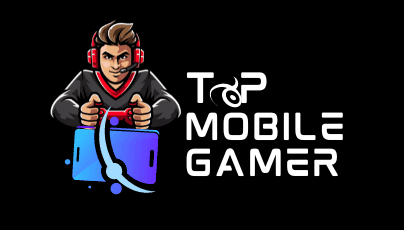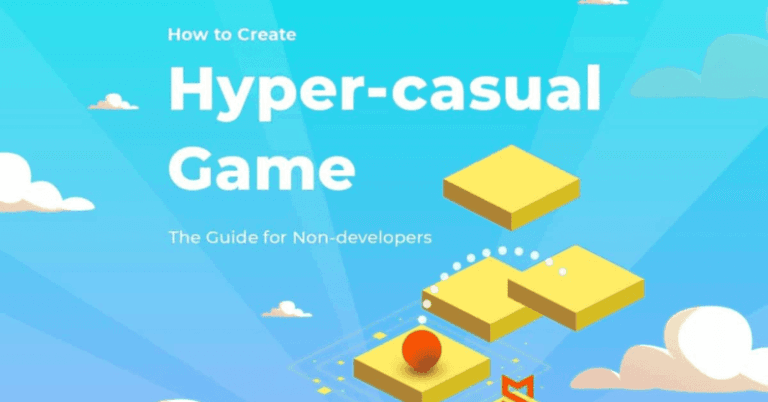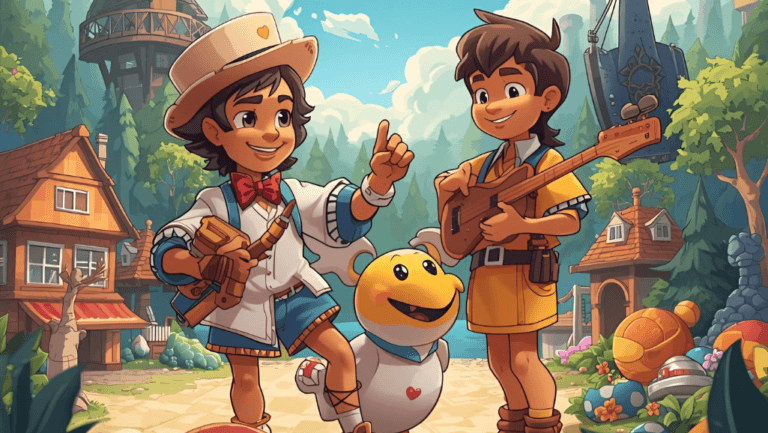The mobile gaming market remains enormous and continues approaching a near $100 billion milestone, with more than 3 billion players worldwide (confirm with current market reports like Newzoo or Sensor Tower for the latest year).
Discoverability matters. This guide sorts the landscape by clear game genres so readers and developers can find the right audience and strategy fast. We’ll break down gameplay, monetization, and ASO so you can match budget, scope, and long-term monetization to audience fit.
Expect practical examples—from Candy Crush Saga as a casual puzzle exemplar to PUBG Mobile and Mobile Legends in competitive arenas—that show how popular mobile titles align genre, mechanics, and monetization for strong retention and revenue.
We also spotlight tech trends—cloud streaming, AI, AR/VR, and cross-platform moves—that change how users discover and stick with games across mobile devices. Use this guide as a quick reference to choose the right category and ASO checklist for your next project.
Key Takeaways
- Types of Mobile Games.
- Sorting by genre simplifies discovery for users and helps developers target the right audience and metrics.
- Download leaders (often hyper-casual) differ from top spenders (Strategy, RPG/MMO); use both signals to shape design and monetization.
- Iconic titles offer concrete lessons across casual and hardcore categories—study mechanics, progression, and live ops.
- Picking the correct category and metadata improves ASO, discoverability, and long-term user experience.
- Emerging tech and trends continually shift expectations—track cloud, AI, and cross-device play as you plan.
The mobile gaming landscape today: popularity, revenue, and player behavior
Downloads and dollars rarely match. In many recent market reports, action and puzzle subgenres led installs while Strategy, MMORPG, and RPG titles captured the biggest share of consumer spend — a split that shapes where players spend their time and how studios prioritize production and monetization (verify with current-year data from Newzoo, Sensor Tower, or App Annie).
Downloads vs. revenue
Hyper-casual hits drive volume; progression-focused titles drive value. Short sessions and simple mechanics generate massive download numbers (think Helix Jump-style virality), while deep progression loops and social systems keep users engaged for months and convert them into high spenders via IAPs, gacha, and live events (use store charts to pull exact % split for your year).
Practical example: a hyper-casual title can reach tens of millions of downloads quickly through ad-driven UA, whereas a mid-core Strategy or MMORPG can earn substantially more per player over time despite far fewer installs.
Tech enabling expansion
Device power, improved networks, and cloud and cross-device play are lowering hardware barriers and widening the addressable market. Console-quality experiences are increasingly possible on many mobile devices, which raises the ceiling for engagement and average session length across regions.
Hybrid monetization and live ops are standard. Most successful teams blend ads with in-app purchases, battle passes, and subscriptions, then use events, seasons, and social features to build communities that stick. Before scaling UA spend, validate downloads, retention, and LTV in your target category with a short market viability checklist.
- Downloads skew to quick-play hits; revenue skews to deep progression titles.
- Connectivity and cloud play lower hardware limits and expand global reach.
- Live ops, events, and social loops convert users into loyal players and higher ARPU.
Casual and hyper-casual powerhouses
Casual games win attention by turning tiny pauses into repeat play sessions. These titles hit the sweet spot between tiny learning curves and habit-forming loops, driving huge install volume and steady daily sessions across mobile devices.
What makes them easy to pick up, hard to put down
Low barriers and tight feedback loops define the appeal: one-thumb controls, immediate rewards, and short runs let players jump in during a commute or between tasks.
Design focuses on instant clarity (clear goals in 3–7 seconds), satisfying audiovisual feedback, and short-session pacing so players keep coming back for “one more” attempt.
Monetization mechanics: ad-supported loops vs. in-app purchases
Hyper-casual titles typically rely on ad impressions — rewarded videos, interstitials, and native placements — to monetize massive audiences. High CPMs and fast session turnover make ads the primary revenue driver for many viral hits (cite your ASO/analytics provider for exact CPM ranges).
Conversely, casual puzzle games blend ads with IAPs: boosters, extra lives, and level packs extend lifetime value for engaged users. Proper segmentation (who sees ads vs. who sees offers) preserves UX while increasing ARPU.
Standout examples and scale
Candy Crush Saga is the classic puzzle example: simple match‑3 mechanics scaled into years of retention and social gifting (see historical revenue reports for exact figures). Hyper-casual breakouts like Helix Jump and Stack Ball demonstrate how a single mechanic can drive tens of millions of downloads quickly. More recent viral hits (add current-year examples from store charts) show the pattern persists.
Quick comparison (one line): Hyper-casual = ad-first, rapid UA, low session time; Casual puzzle = blended IAP + ads, higher session depth, longer retention.
- 2021 leaders: action, puzzle, and simulation led installs (verify with app-store analytics for your target year).
- Casual downloads remain a global volume driver, while mid-core titles capture higher spend per user.
- Small teams can break out with a sharp mechanic, tight UA, and rapid iteration.
Mechanic-first checklist (dev CTA): prototype a single core loop, test it to 1,000 installs, measure retention and ad eCPM, then iterate. Prioritize gameplay clarity, quick onboarding, and measurable funnels.
Competitive multiplayer arenas: battle royale and MOBA
When hundreds of players drop into the same map, every match becomes a fresh test of strategy and reflexes. Competitive arenas blend fast action, seasonal storytelling, and social systems so single sessions feed long-term engagement and community growth.
Battle royale puts squads into a shrinking world: land, gear up, and outlast rivals until one team or player remains. Flagship titles like Fortnite, PUBG Mobile, and Free Fire keep communities tuned in with live events, limited-time modes, and cosmetic ecosystems that drive revenue and retention.
MOBA and eSports on the go
MOBA matches reward coordination: lane control, hero mastery, and timed objectives create deep competitive loops. Mobile Legends and League of Legends: Wild Rift translate console-grade clashes to handheld devices with touch-friendly controls and shorter match lengths that fit mobile play sessions.
- Fair matchmaking, clans, and tournaments build engaged, returning players.
- Seasonal drops, ranked ladders, and battle passes renew goals and increase lifetime value.
- Monetization examples: cosmetics, skins, battle passes, and limited-time bundles (focus on non-pay-to-win items to preserve integrity).
- Reliable servers, robust netcode, and anti-cheat systems are non-negotiable for smooth, competitive multiplayer online experiences.
Dev priorities & accessibility: invest early in netcode and anti-cheat, design onboarding and practice modes for new players, and plan input mapping to handle device fragmentation so controls feel fair across a wide range of mobile devices.
Tip: Onboard players with short tutorials, match them fairly, and provide practice modes so new gamers can ramp up without friction and stay in the competitive loop.
Progression-heavy adventures: RPG, MMORPG, and Strategy games
Progression-driven experiences keep players invested for months, not minutes. These games emphasize long-term growth, social bonds, and layered reward systems that nurture mastery and repeat spending.
RPG on handheld: character growth, gacha, and open-world exploration
RPGs center on character progression, gear optimization, and narrative arcs that reward steady play. Systems such as gacha pulls, hero collection, and daily login loops fund ongoing content and create chase mechanics that keep players returning.
MMO scale and social hubs: persistent worlds and live ops
MMORPGs act as always-on social hubs where guilds, raids, and timed events make worlds feel alive. Persistent economies and social systems increase stickiness: players form social habits around guild chat, scheduled raids, and seasonal festivals.
Live ops—calendars, festivals, and limited banners—refresh objectives and create recurring reasons to log in week after week, which boosts retention and per-user spend.
Strategy leads in spend: Clash Royale, State of Survival, and beyond
Strategy and strategy games often top consumer spend because tactical depth, PvP ladders, alliance metas, and time-based progression encourage investment. Titles like Clash Royale and State of Survival illustrate how seasons, co-op mechanics, and ranked play can drive long-term retention and revenue.
- Balanced economies: clear value in passes, bundles, and cosmetics preserves trust and reduces churn.
- Predictable content cadence: release new chapters and modes on a schedule so players anticipate and plan engagement.
- Cross-platform and multiplayer online features let friends coordinate across devices, expanding reach and lifetime value.
For developers, a winning formula mixes strong onboarding, role clarity, and a fair progression curve so new players feel powerful early and can see long-term mastery paths ahead.
Onboarding & progression checklist
- Show core loop in first 60 seconds (combat, build, or match flow).
- Introduce role and core mechanics progressively—avoid information dumps.
- Provide early wins to demonstrate mastery and hook retention.
- Design a fair economy: transparent pricing and clear value for passes/bundles.
- Plan live ops calendar before launch to sustain content cadence.
- Publish gacha odds and compliance info where required to build trust.
Life-like play and real-time thrills: Simulation, Sports, and Racing
Sandbox worlds let players craft slow stories, while stadiums and speedways deliver pulse-quickening moments.
Simulation hits like The Sims Mobile, city builders, and farming titles drive daily engagement through creator tools, avatar systems, and persistent economies. Players tend virtual lives, tune economies, and trade creations in social hubs, which increases retention and creates opportunities for creator-driven monetization.
Simulation and sandbox worlds
These games reward steady play and creativity: avatar customization, building tools, and marketplaces deepen community and keep users returning. Technical priorities include device profiling and performance testing to ensure smooth experiences on a wide range of mobile devices.
- Dev tip (simulation): prioritize save/resume stability, creator UX, and moderation tools for user-generated content.
- Monetization: cosmetics, creator marketplaces, and seasonal content work best when paired with strong social features.
Stadiums and speedways
Sports entries such as FIFA Mobile and NBA Live rely on licensed teams, realistic animations, and live events to make each match meaningful. Racing franchises like Asphalt and Real Racing emphasize responsive handling, tuned physics, and cross-device competition for peak thrill.
- Dev tip (sports/racing): invest in input mapping, physics tuning, and controller support to keep gameplay fair across hardware.
- Keep content fresh with new tracks, kits, and stadium events to sustain veterans and welcome newcomers.
- Prioritize fairness and performance across devices; include accessibility options and controller compatibility where possible.
Tip for developers: Combine creator features, social clubs, and technical QA (device matrix testing, latency targets) so the game becomes a living community—not just a solo experience.
Classic favorites and evergreen puzzles: Arcade, Casino, Card, Word, and Trivia
Classic arcade loops and cozy board conversions keep players coming back for short, satisfying bursts. These formats deliver clear goals, quick sessions, and social hooks that fit commuting or short breaks, making them perennial favorites in the mobile games market.
Arcade and board vibes
High-score chases and digital tabletop ports translate especially well to touchscreens. Casual players enjoy short runs, leaderboards, and asynchronous multiplayer—titles like UNO! show how known rules and social play unlock replay value.
- Monetization tip: sell cosmetic upgrades, season passes, and social boosts rather than gating core play behind paywalls.
- Dev caution: optimize session pacing for short time windows (5–10 minutes) and keep matchmaking fast for leaderboards and asynchronous play.
Casino and card favorites
Slots, blackjack, poker, and other card tables remain high earners in many markets. Casino-led spend is substantial, but requires transparent odds, ethical ad placements, and compliance with regional regulations to maintain trust.
- Monetization tip: focus on lifetime value—VIP systems, bundles, and targeted offers drive revenue when combined with responsible messaging.
- Dev caution: publish odds where required and implement strong age-gating; consult COPPA/GDPR-K and local gambling rules.
Example: top card apps and slots often sit in high-revenue charts worldwide—check market analytics for current downloads and ARPU by region.
Puzzle, word, and trivia staples
Match‑3, Sudoku, crosswords, and quiz shows deliver calming but addictive play. Puzzle games like Candy Crush combine short sessions with event-driven retention; trivia benefits from live shows and fresh question packs.
- Monetization tip: combine ads (rewarded video) with optional IAPs for boosters and premium question packs to avoid alienating casual users.
- Dev caution: rotate content regularly but avoid overwhelming users—small, predictable drops keep engagement steady.
Kids and educational experiences
Design for learning: clear labels, parental controls, and careful IAP placement protect families. Add accessibility options—color-blind modes and adjustable difficulty—to welcome more users and improve the learning experience.
- Tip: Choose the correct category to boost relevancy and conversion in stores.
- Consistent updates, transparent monetization, and fair play build long-term trust and retention.
The types of mobile games through an ASO and monetization lens
Your store listing often decides whether a player discovers or scrolls past your title. Choose the most relevant category and optimize metadata to match user intent, improve ranking signals, and increase conversion in browse and search.
Choosing the right category: relevancy, competition, and discoverability
Relevancy wins. Accurate category placement signals expected gameplay and mechanics to users and to the store algorithm. Study competition density and keyword landscapes before you commit — fewer rivals can mean faster traction and clearer ASO wins.
Categories can be changed later, but ratings, creatives, and metadata compound over time. Optimize these assets early and iterate based on store analytics and user feedback.
ASO checklist (one-week experiment)
- Day 1: Pick category and primary keywords that reflect core gameplay and game genre.
- Day 2: Finalize title + short description (include primary keyword), and craft an eye-catching icon.
- Day 3: Create 3–4 screenshots showing core gameplay moments and one short gameplay video.
- Day 4–7: A/B test two creative sets and track installs, conversion, and retention to pick the best assets.
Revenue realities: consumer spend leaders vs. ad-driven hits
Consumer spend concentrates in Strategy, MMORPG, RPG, Casino, and Match categories, while ad-driven titles (often hyper-casual) achieve high download velocity. Use the category lens to set realistic KPIs: downloads for reach, retention/LTV for monetization health.
Hybrid monetization—battle passes, subscriptions, rewarded ads, and cosmetic sales—respects genre norms and boosts lifetime value without alienating users when implemented transparently.
Test icons, screenshots, and video by audience segment so store assets communicate core gameplay instantly and reduce user friction at install.
Future-ready trends: cloud gaming, AI, AR/VR, and blockchain ownership
Cloud and cross-device play remove hardware limits and widen market reach; AI and procedural systems let developers scale content and personalize the user experience. AR/VR and blockchain features can differentiate a title, but communicate value, security, and compliance clearly to maintain trust.
- Track downloads with retention, LTV, and payback windows to scale UA profitably.
- Build adaptable pipelines so your product stays ready for new devices and sudden market shifts.
- Iterate store assets and ASO continuously while monitoring competition, user reviews, and keyword trends.
Conclusion
Whether you favor quick puzzle breaks or long multiplayer campaigns, there’s a fit for every player.
From Candy Crush comfort to battle royale thrill, popular mobile game choices span calm and competitive play. Explore genres that match your available time and your preferred gameplay. Good titles blend clear progression, strong community features, and fair monetization systems.
For creators: pick a category that amplifies your core loop, align monetization with player expectations, and plan steady live ops. Evergreen pillars—strategy depth, RPG character growth, card and casino familiarity, and sports and racing excitement—remain reliable performers when executed well.
Action plan for creators
- Prototype fast: validate one core mechanic in a short test (measure retention and eCPM).
- Pick the right category and ASO strategy: match metadata to gameplay and audience intent.
- Plan live ops and monetization that respect users while driving LTV (transparent offers, fair progression).
Prototype, measure what matters, iterate boldly, and build trust with honest ads and transparent systems. The next great mobile gaming story is waiting—design it, ship a tested MVP, and let players discover it.

























